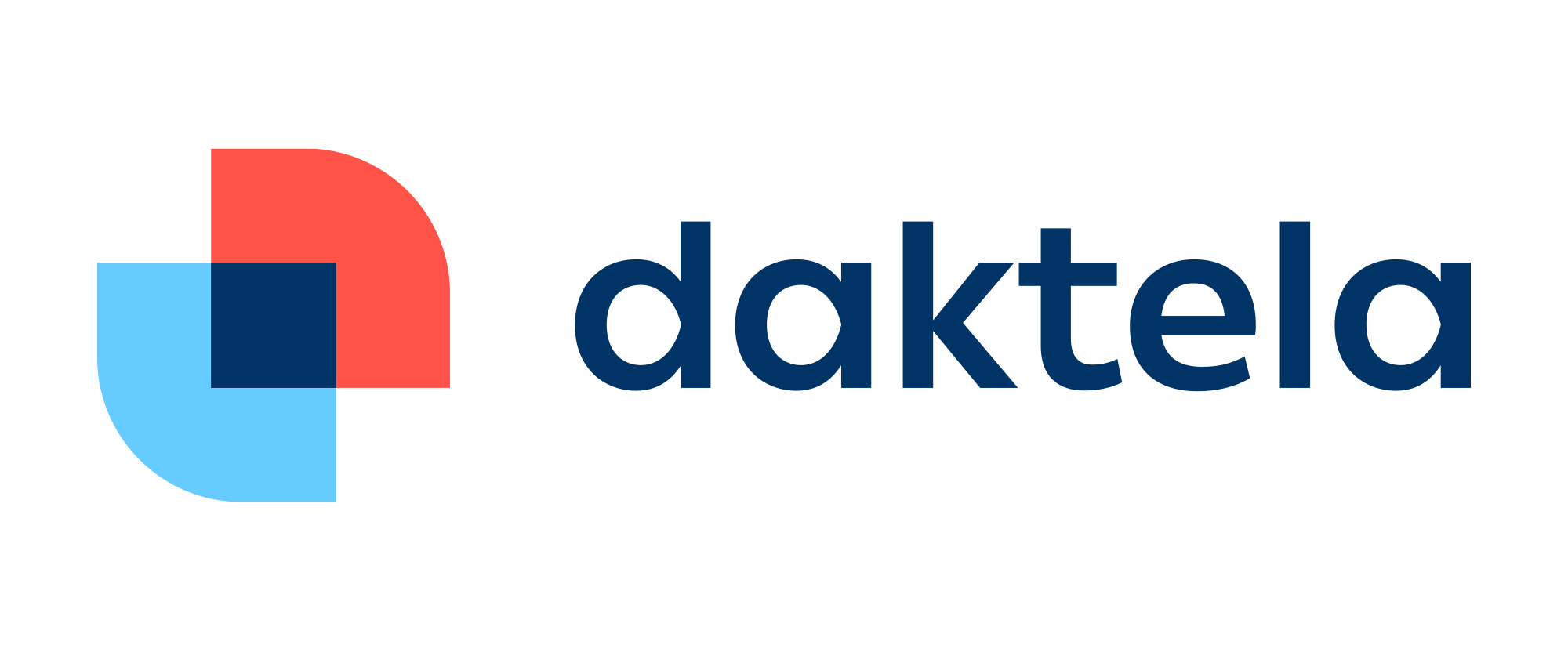After nearly two years of research, development, testing, and feedback, we’re proud to introduce something big:
Daktela Neo — a faster, smarter, and more intuitive experience built to power the future of customer communication.
Neo isn’t just a redesign. It’s a complete rethinking of how Daktela works — from the front-end codebase to the way everyday workflows are structured. And while you’ll still recognize your favorite tools and modules, everything around them is cleaner, quicker, and easier to use.
In this article, we want to take you behind the scenes: why we built Neo, how we designed it, what’s already available, and what’s coming next.
Why We Decided to Rebuild Daktela from the Ground Up
Over the years, Daktela has grown — new features, channels, automations, integrations. That growth is powerful, but it also introduces complexity.
As we looked ahead, we knew we needed a new foundation — one that could support faster innovation, richer interfaces, and more flexibility for both users and developers.
That’s why we made the decision to completely rewrite the Daktela frontend in React.
React is one of the most widely used front-end frameworks today — trusted by teams at companies like Meta, Shopify, and Slack. It’s built for speed, interactivity, and scalability. With React, we can create highly dynamic user interfaces that feel smooth, respond instantly, and adapt to your workflows.
But rewriting a platform like Daktela is no small task. From early architecture planning to production rollout, the React migration took nearly two years — and it touched every part of the product.
Still, we knew that great code alone isn’t enough. To truly improve the experience, we had to understand how people actually use Daktela every day.
A User-Centered Design Process, From Start to Finish
In parallel with the technical rewrite, our UX team led an intensive research and design effort — focused on the people who use Daktela to do their jobs.
We started by conducting interviews with agents, admins, supervisors, and team leads across industries. We didn’t just ask questions — we observed real workflows, documented pain points, and mapped out where the product could serve users better.
From there, we built a design process centered around feedback:
- Wireframing key flows and screens — keeping things simple to explore structure and layout
- Running early tests — validating navigation ideas and interaction patterns
- Building prototypes — high-fidelity, clickable interfaces to simulate real work
- Usability testing — watching users work inside the prototypes and gathering direct feedback
This research surfaced patterns that helped shape the foundations of Daktela Neo:
- Users wanted fewer clicks and better visibility into key information
- Navigation needed to feel natural, not layered or hidden
- Support tasks like calling, replying, or switching views had to be faster and more context-aware
The result is a platform that feels streamlined — but is backed by real research and feedback at every step.
Rolling Out Daktela Neo in Three Stages
To make the transition smooth and meaningful, we’ve decided to release Daktela Neo in three carefully planned stages:
Stage 1 – Layout & Feel (✅ Available Now)
This first stage includes major updates to the overall structure and navigation of the app — the visual and functional foundation of what’s coming next.
- New Main Menu
- Now tucked under a hamburger icon, or openable via keyboard (M). It keeps things clean, but always accessible.
- Quick Menu
- Pin your most-used pages for one-click access, automatically pre-filled based on your permissions.
- Breadcrumb Navigation
- See where you are in the app at a glance, and hover to quickly jump to sub-pages.
- Global Search
- Opened via Ctrl + K or Cmd + K, you can search across contacts, tickets, accounts, and knowledge base articles — and launch actions like calls or emails right from results.
- Queues & Devices in the Top Bar
- Always visible, but now decluttered. Unpin what you don’t need to simplify your space.
- Right Bar Redesign
- Your new home for quick actions — create tickets, check the calendar, or access Copilot AI tools instantly.
This first stage is already in use with early adopters — and the feedback is promising. People report smoother navigation, less friction when switching tasks, and a cleaner feel that supports focus.
“Pinned pages in the quick menu are a game-changer.”
“I love being able to search and dial directly from the results.”
“It feels more modern and just… easier.”
Stage 2 – Tickets (🟡 Coming Soon)
We’re redesigning the ticket layout from the ground up — bringing all the essential context into one place and making it easier to stay focused on conversations.
What to expect:
- Quick previews from the ticket grid
- A streamlined, intuitive layout
- Clearer updates and better visibility into history, attachments, and templates
Stage 3 – Activities (🟣 Planned Next)
Calls, emails, and chats will get a complete interface overhaul — featuring a customizable two-column layout with independent scrolling. You’ll be able to adapt your view based on your current task, helping you multitask without losing focus.
Built on a New Design System
One of the hidden heroes of Daktela Neo is our new internal design system — a unified set of components, patterns, and guidelines that power every part of the app.
This gives us:
- A consistent, modern interface across 200+ screens
- The ability to iterate faster without design regressions
- Support for future themes, accessibility, and UI personalization
In short, the design system lets us move faster, ship better experiences, and ensure that everything from buttons to page layouts stays coherent — no matter how the platform evolves.
Daktela Neo marks the start of a new chapter for our product.
It’s about performance. Clarity. And most of all, usability.
We’ve rebuilt Daktela to feel effortless — whether you’re answering a call, managing a team, or navigating complex customer interactions.
And we’re not stopping here. With this new foundation, we’re ready to:
- Introduce even more intelligent AI features
- Expand and refine every user workflow
- Respond to customer feedback faster than ever before
Ready to Try It?
The first version of Daktela Neo is already available for early users — and will soon be rolled out more broadly. If you’re already using it, we’d love to hear what you think.
If not — you’ll see it soon. And when you do, we think you’ll find that the changes don’t just look good. They feel good to use.
It’s still Daktela. Just better.
A new look. A better way to work.







